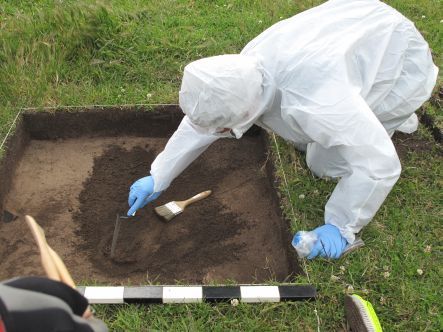by Veronika Meduna

Lisa Matisoo-Smith is removing human remains on Isla Mocha, off the Chilean coast, dressed in protective clothing to prevent contaminating the ancient DNA in the bones.
Anthropologists have known for some time that Polynesian navigators have crossed the Pacific ocean to reach the west coast of America. The kumara is just one piece of evidence that an exchange between the two cultures has taken place. The intriguing question was when it happened.
Lisa Matisoo-Smith, a biological anthropologist at the University of Otago, has focused her research on the settlement of the Pacific, the last major voyage of expansion that began around 3300 years ago. She used commensal animals – chickens, dogs and pigs – and the Pacific rat or kiore, all of which could only travel across the ocean with people, as proxies to track human migration.
Recently, her team’s analysis of chicken bones (pdf) that had been unearthed on the coast of Chile showed that the DNA resembled that of a fowl species native to Polynesia, and that the birds had reached America more than a century before Columbus. Now, the discovery of human remains with distinctly Polynesian characteristics in a South American museum has provided a new focus for her research. Her team is using the museum collection as well as human bones excavated from Isla Mocha, an island 30km off the Chilean coast, to extract ancient DNA and to test whether it contains genetic markers specific to Polynesians. If it does, the analysis, combined with dating techniques, will show when Polynesians made landfall in America.

